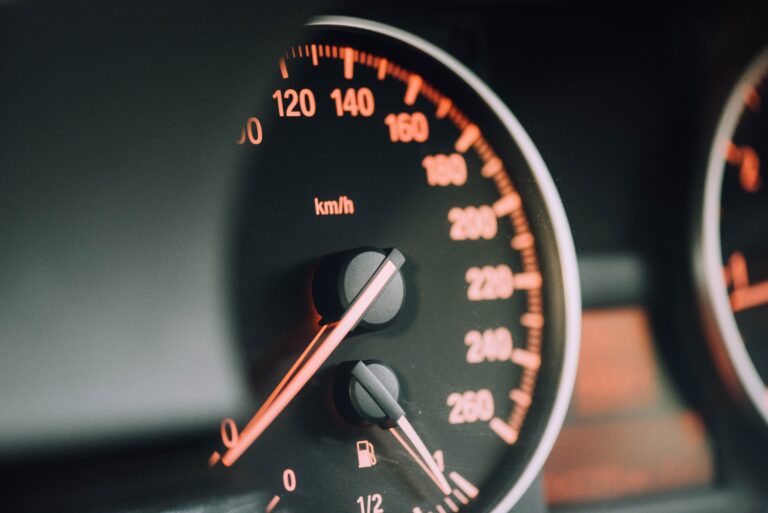Cutting the fuel excise for a six month was one of the main announcements in the 2022-23 Budget. It shows that the policy can be apparent to the public eyes and thought to have direct impact on the cost of living of the average Australian voters. The fuel tax, or fuel excise, is an important policy for Australia. It can generate revenue for the government, control congestion problems by reducing private transport, and arguably it can fund the maintenance of road infrastructure. It is also important to encourage the reduction of vehicle emissions – one of the main sources of greenhouse gases.
The announcement reminds us that the tax does have equity and inequality problems. In 2014, the then Australian Federal Treasurer tried to defend the Government’s planned fuel tax by arguing that it would not hurt poorer Australians as “the people that actually pay the most are higher income people” and “the poorest people either don’t have cars or actually don’t drive very far in many cases”. The public backlash after this statement illustrates the importance of understanding the impact of policies such as a fuel tax, which may negatively affect the most disadvantaged households. Media reports in Australia have highlighted, for example, that lower income households in Australian cities has already paid a higher share of toll road charges.
There are other policies that may reduce vehicle emissions. These include an accelerated vehicle retirement program, which encourages the retiring of older vehicles that often produce higher emissions; vehicle registration tax to encourage the purchase and ownership of low-CO2 emitting cars, congestion-based road pricing applied to specific areas, and distance-based road pricing that applies a charge for distance travelled.
However, all these emission policies have their own impact on equity. A road pricing program affects those families who live in the outskirts of cities, and the accelerated vehicle retirement program costs the owner of older vehicles the most. Tradable CO2 permits could be restrictive to lower income households. Theoretically, as these policies reduce mobility by restricting the use of private vehicles, households who have higher reliance on vehicles are likely to pay more tax. Therefore, it is necessary to start analysing the distributional impact of these policies to highlight the impact they have on the most disadvantaged families.
To analyse the equity implications of different taxation programs, the starting point is to model the distribution of vehicles, their type and their usage among households in Australia. This modelling is required because there is currently no information about household type in vehicle data and vice versa. Our model utilises spatial microsimulation of the Australian Bureau of Statistics (ABS) Household Expenditure Survey (HES), as it had the necessary fuel expenditure and data on income and household characteristics, which are important in distributing vehicles to households. Spatial microsimulation distributes the households from the survey to the small areas based on benchmarks from the ABS Census of Population and Housing. The vehicles are allocated to these households from the ABS Motor Vehicle Census.
Modelling results
One of our findings from this modelling is that households in the lowest income decile have a much higher proportion of older vehicles. Around half of the vehicles owned by households with the lowest income decile are 15 years or older, compared to only eight per cent for the highest income. Among the owners of older vehicles, single parents are dominant followed by pensioners and tertiary students. The model shows that having children increases the need for having a vehicle. Therefore, it could be argued that a low-income single parent household may have no choice but to buy a second-hand vehicle, which is likely to be older.
In terms of the vehicle engine size, 4-cylinder passenger cars were the most popular for all households regardless of income decile. Around 60 to 65 per cent of the vehicles have a 4-cylinder engine. Although smaller in number, the distribution of vehicles with bigger engines is important as, on average, they are less efficient. The number and proportion of 8 or more cylinder cars is higher in the higher income deciles. Although households with children (especially couples) also have relatively high proportion of bigger engine vehicles, they are mostly 6-cylinder. Motorcycles in Australia have much better fuel efficiency than cars and are owned mostly by high income households.
The impact of an emission reduction scheme not only depends on the types of vehicles the households own but also the usage of the vehicle. This is because the emission reduction program is intended to reduce the use of vehicles. On average, the difference in vehicle kilometres travelled by different income deciles is not that much, resulting in small differences in fuel expenditure per week. This is despite the big difference in disposable income. Therefore, the proportion of income spent on fuel is much higher for households with a low income. In addition, having children increases the distance travelled, on average, by 140 km per week for singles, and 127 km per week for couples.
The distributional impact
The implication of the distribution of vehicles described above is that fuel tax and road pricing schemes are likely to have a different impact on households with different incomes. This is mainly because lower income households are likely to pay a higher proportion of income on either of these two taxes. In addition, these taxes would have a considerable impact on households in outer suburbs as they have to drive further to get to work and would use toll roads that connect the outer to the inner suburbs where employment is usually concentrated. Compared to fuel tax, road pricing is better in addressing equity. However, road pricing does not encourage people to own a more efficient vehicle. In theory, a low-income household can get a subsidy or concession when buying a more efficient vehicle, although this may be difficult to implement.
The results also show the importance of the vehicle registration tax (VRT) in the policy mix. This is because the VRT can be targeted to different types of vehicles, as well as using concessions to target different households. However, the simulation indicates that targeting is not straightforward. For example, charging a higher VRT on inefficient 8 or more cylinder vehicles can both address equity and environmental issues because most of these vehicles are owned by higher income households. However, the other vehicles owned predominantly by high income households are motorcycles, which do not use as much fuel as cars, and have a much lower VRT. Another problem in using VRT to reduce emissions is that it means a higher VRT is placed on older vehicles, which then has a greater impact on the incomes of lower income households.
The use of concessions on VRT is quite common in Australia, but so far it has tended to be about affordability for low-income households, rather than to encourage newer and more efficient vehicles. A concession scheme could be adjusted to encourage the purchase of newer vehicles rather than used vehicles, however this would also make the concession scheme much more complex.
Another issue with using the VRT as a policy lever is that it only can encourage people to choose a more efficient vehicle; it won’t reduce the use of the vehicle once it is paid – in economic terms, it is a fixed cost, and doesn’t depend on the kilometres travelled in the vehicle.
This blog is based on our Transport Policy article, ‘Investigating Australian households’ vehicle ownership and its relationship with emission tax policy options.’
Other Budget Forum 2022 articles
Trusts and Tax Avoidance – Extension of Funding for ATO Taskforce, by Sonali Walpola.
Budget Reveals No Plan for Disaster Volunteering, by Jack McDermott.
A Fairer Tax and Welfare System for Australia, by Ben Phillips and Richard Webster.
Claiming Crypto Donations under Division 30, by Elizabeth Morton.
The Budget, Fiscal Policy and an Outbreak of Inflation, by Chris Murphy.
Natural Disasters and Government Policy Challenges, by John Freebairn.
Petrol Excise Cut in the Budget! What About the Transition to Zero-Emission Cars? by Diane Kraal.
For Social Infrastructure and Tax Reform, We Need a New Federal Fiscal Bargain, by Miranda Stewart.
A Free Lunch From Government Debt? It Certainly Looks That Way, by John Quiggin and Begoña Dominguez.
On the Limits of Fiscal Financing in Australia, by Chung Tran and Nabeeh Zakariyya.







Recent Comments